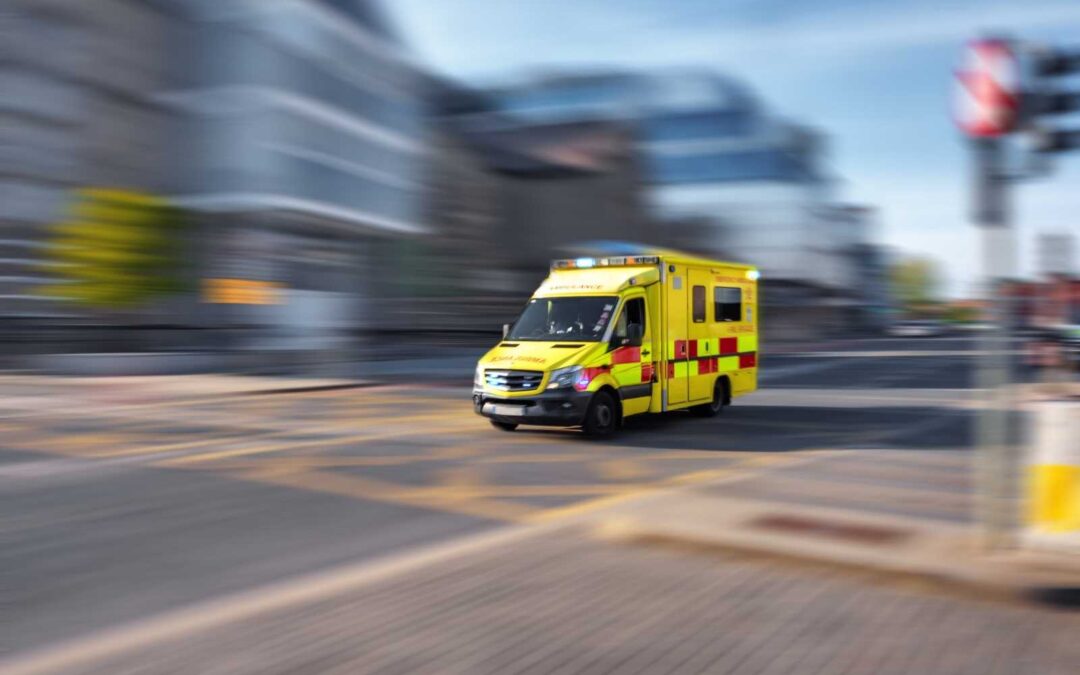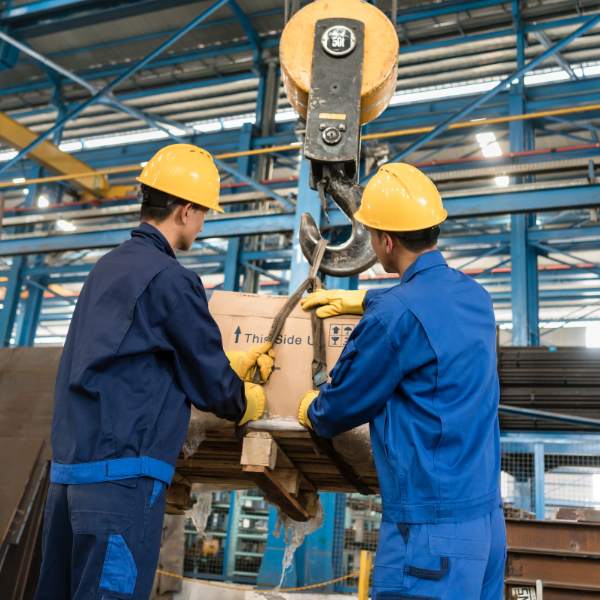Why the EPA’s 2025 Air Quality Report is a Wake-Up Call for Irish Businesses
What You Really Need to Know
Introduction
In a significant development for workplace safety in Ireland, Minister of State Alan Dillon has signed major new regulations into law, updating the legal requirements for two of the biggest causes of workplace injuries: manual handling and work at height. These changes, formalised in the Safety, Health and Welfare at Work (General Application) (Amendment) Regulations 2025, were announced on September 22nd and will come into force on November 1st, 2025.
The deadline is tight, and these are not minor clarifications they represent a fundamental strengthening of an employer’s duty of care. For businesses across Ireland, this is an urgent call to review, update, and in many cases, completely overhaul existing risk assessments and safety procedures to ensure compliance.
This essential bulletin from Acornstar will break down exactly what has changed, what the new legal expectations are, and provide a clear action plan your business must take now to be ready for the November 1st deadline.
Why Now? The Drive to Modernise Irish Safety Law
According to the government’s announcement, these amendments are designed to “modernise and clarify” the legal framework surrounding two long-standing problem areas. As Minister Dillon stated, both manual handling injuries and falls from height remain leading causes of non-fatal (and tragically, fatal) workplace incidents reported to the Health and Safety Authority (HSA) each year.
The new regulations are not about adding bureaucracy; they are a direct response to accident data, aimed at forcing a more rigorous, preventative approach to risk management. They move away from general assessments towards highly specific, documented considerations that employers must now prove they have taken into account.
Authoritative Link: You can read the official announcement on the Department of Enterprise, Trade and Employment website.
Deep Dive 1 The New Rules for Manual Handling
For years, a general manual handling risk assessment was the standard. The new 2025 regulations now mandate a far more detailed and specific approach. Employers must now explicitly assess and document their consideration of several key factors.
What Your New Risk Assessments MUST Include:
- Characteristics of the Load: It is no longer enough to just note the weight. You must now consider if the load is unwieldy, difficult to grasp, unstable, or likely to shift. Is its centre of gravity off-balance?
- Physical Effort Required: Your assessment must analyse the physical actions involved. Does the task require the employee to twist their trunk, stoop, or adopt an unstable posture? Does it involve excessive lifting, lowering, or carrying distances?
- The Work Environment: The space itself must be formally assessed. Are there space constraints that prevent good posture? Are the floors uneven, unstable, or slippery? Does the temperature or ventilation affect the employee’s ability to perform the task safely?
This means a generic “lift with your knees, not your back” training session is no longer sufficient. Your risk assessments must be specific to the task, the load, and the environment, and you must be able to prove it.
Deep Dive 2 The Strengthened ‘Hierarchy’ for Work at Height
Falls from height remain a major cause of serious and fatal injuries in Irish workplaces, particularly in the construction sector. The new regulations significantly strengthen the legal expectation on employers by reinforcing the ‘hierarchy of control’. The priority order is now more explicit than ever.
The AVOID PREVENT MINIMISE Mandate:
- AVOID Working at Height (Absolute First Priority): Before any other consideration, you must ask: can this task be done from the ground? This means exploring options like using long-reach tools for cleaning or painting, or assembling components at ground level before lifting them into place. You must be able to demonstrate that avoiding the risk was your first consideration.
- PREVENT Falls (If Avoidance is Not Possible): If working at height is unavoidable, you must use equipment that prevents a fall from occurring. This is a crucial step. The law now clearly prioritises collective protective measures like scaffolding with double guardrails or using a Mobile Elevating Work Platform (MEWP) over personal fall arrest systems.
3. MINIMISE Consequences (The Last Resort): Only when fall prevention measures are not reasonably practicable can you move to measures that minimise the distance and consequences of a fall. This includes personal protective equipment like safety harnesses and lanyards, or safety nets. The new rules make it clear that choosing this option requires robust justification.
This change effectively raises the bar for employers. Simply handing an employee a ladder and a harness for a task that could have been done from a tower scaffold will be much harder to defend legally after November 1st.
Your Action Plan 4 Urgent Steps to Take Before November 1st
-
With the deadline fast approaching, immediate action is required.
- Communicate Immediately: Your first step today is to inform your entire management team, supervisors, and safety representatives of these upcoming legal changes. Everyone involved in assigning or overseeing work must understand the new requirements.
- Audit ALL Manual Handling Risk Assessments: This is a critical, hands-on task. Pull every single existing manual handling risk assessment. Review them against the new, specific criteria for the load, effort, and environment. Re-do and re-document them as needed.
- Re-evaluate ALL Work at Height Procedures: Conduct a comprehensive audit of every task that involves work at height. Challenge your existing methods against the strengthened AVOID PREVENT MINIMISE hierarchy. Document your justifications for why a task cannot be done from the ground, or why fall prevention equipment is not being used.
Update All Training and Toolbox Talks: Your existing training materials are now obsolete. They must be updated immediately to reflect the new specifics on manual handling assessments and the explicit work at height hierarchy.
The ISO 45001 Advantage From Reactive Panic to Proactive Process
-
For businesses with a robust ISO 45001 Occupational Health and Safety Management System, this news should be less of a shock. A core component of the ISO 45001 framework is the requirement to maintain a “Register of Legal and Other Requirements.” A well-managed system would have already identified this legislative change and triggered a formal review process.
This is a perfect real-world example of why a formal management system, certified in Ireland by the NSAI, is so valuable. It shifts an organisation from a state of reactive panic in the face of legal changes to one of proactive, continuous improvement. It provides the structure to adapt to new challenges efficiently and effectively.
Let Acornstar Guide You to Compliance and Beyond
- The new 2025 regulations on manual handling and work at height are a significant change to the Irish safety landscape, and the November 1st deadline leaves no room for delay. Ensuring your risk assessments, procedures, and training are compliant is an urgent legal necessity.
If you need expert guidance to navigate these changes, audit your current systems, or use this opportunity to implement a world-class safety management system like ISO 45001, contact the expert team at Acornstar today.

The High Cost of Gravity Why HSENI is Targeting Falls in Construction and Farming
The High Cost of Gravity Why HSENI is Targeting Falls in Construction and Farming What You Really Need to Know In the high-risk industries of construction and agriculture, the most persistent and deadly hazard remains the oldest one: gravity. Despite stringent...

Safety First What the New EU Toy Safety Regulation Means for UK and Irish Businesses
Safety First What the New EU Toy Safety Regulation Means for UK and Irish Businesses What You Really Need to Know Introduction On 13 October 2025, the Council of the EU approved its position on a new Toy Safety Regulation that will replace Directive 2009/48/EC. The...

What the ISO 9001 and ISO 14001 Revisions Mean
The Future of HSEQ What the ISO 9001 and ISO 14001 Revisions Mean for UK and Irish Businesses What You Really Need to Know Introduction In the realm of Health, Safety, Environment, and Quality (HSEQ), standing still is never an option. The global standards that...

The AI Revolution in HSEQ What the EU’s “AI Factories” Mean for UK and Irish Businesses
The AI Revolution in HSEQ What the EU’s AI Factories Mean for UK and Irish Businesses What You Really Need to Know Introduction Artificial Intelligence (AI) is rapidly moving from a buzzword to an essential operational tool. A recent announcement from the European...

All-Island Alert Safety Authorities Launch Campaign Targeting Deadly Falls
All-Island Alert Safety Authorities Launch Campaign Targeting Deadly Falls What You Really Need to Know Introduction In a major cross-border initiative, the Health and Safety Authority (HSA) in Ireland and the Health and Safety Executive for Northern Ireland (HSENI)...

The Trojan Horse on Wheels Why a UK Scooter Recall is a Major Safety Warning for Irish Businesses
The Trojan Horse on Wheels. Why a UK Scooter Recall is a Major Irish Safety Warning What You Really Need to Know Lessons from a Critical Electrical Safety Failure In the world of workplace safety, the most serious threats often arrive in the most unassuming packages....

A Shock to the System Why the Anker Recall is an Urgent Electrical Safety Warning for Every Irish Business
Fire Hazard Anker Power Bank Recall is a Workplace Wake Up Call What You Really Need to Know The Shocking Truth About Power Bank Hazards In the world of tech accessories, few names are as recognised and trusted as Anker. That is why the recent major recall of their...

Ireland’s New Emergency Network Is Your Lone Worker Safety Plan Still Fit for Purpose?
National Safety Boost Irish Government Launches New Emergency System What You Really Need to Know Enhancing Emergency Services Response Across Ireland In a major step forward for national safety, the Irish Government has announced the launch of a new, state-of-the-art...

The Human Cost of Tech Is Your Irish Workplace Ready for the EU’s Digital Safety Focus?
What EU-OSHA's Seminar Means for Human Factors in Digital Workplaces. What You Really Need to Know Introduction On October 10th, 2025, Europe’s top safety experts will gather for a crucial online seminar hosted by the European Agency for Safety and Health at...

Beyond the Award Are You a ‘Leading Light’ in Driving for Work Safety?
Why the EPA’s 2025 Air Quality Report is a Wake-Up Call for Irish Businesses What You Really Need to Know Introduction Every year, the Road Safety Authority (RSA) shines a spotlight on the individuals, communities, and organisations making a real difference on our...





